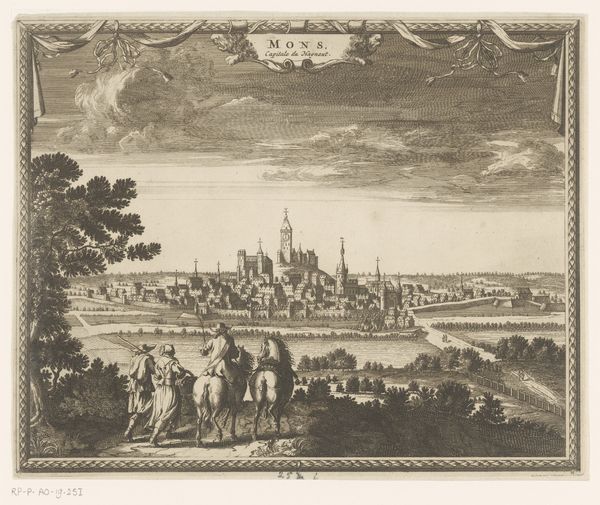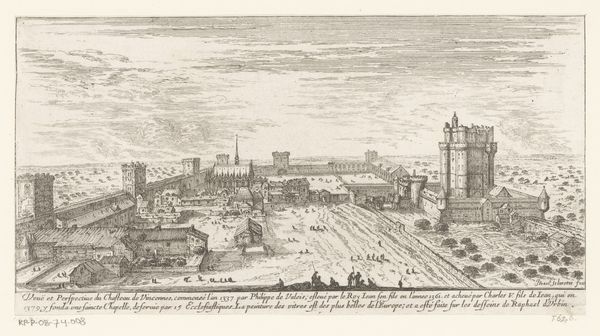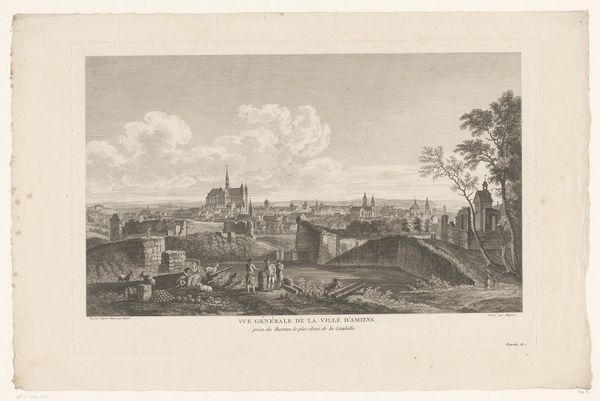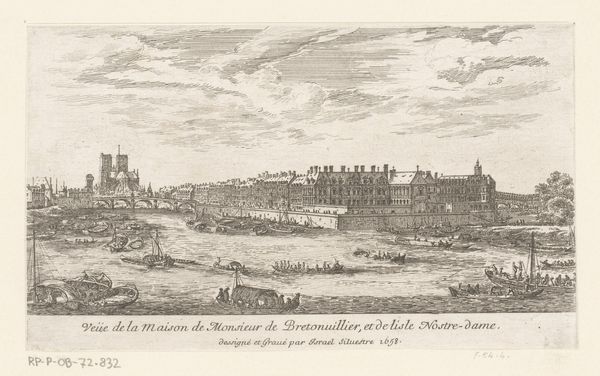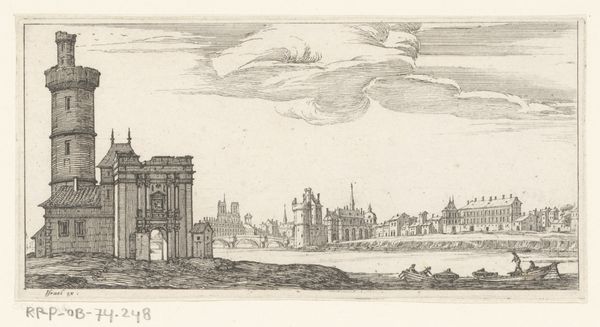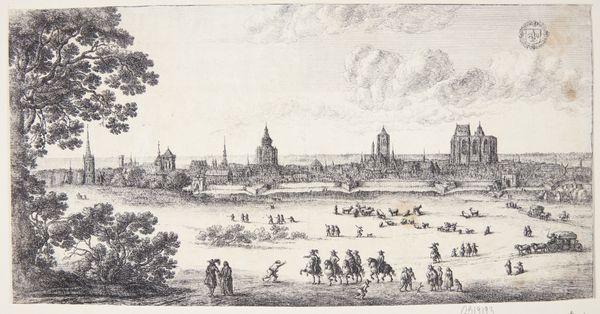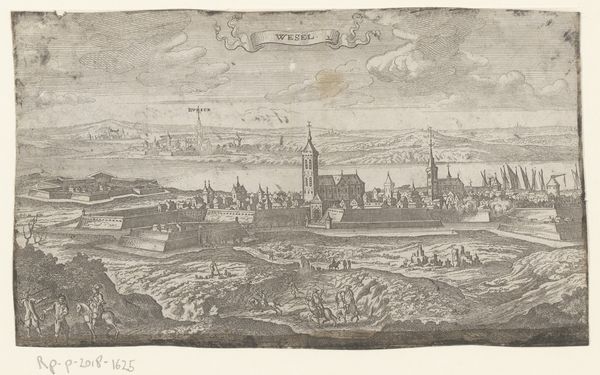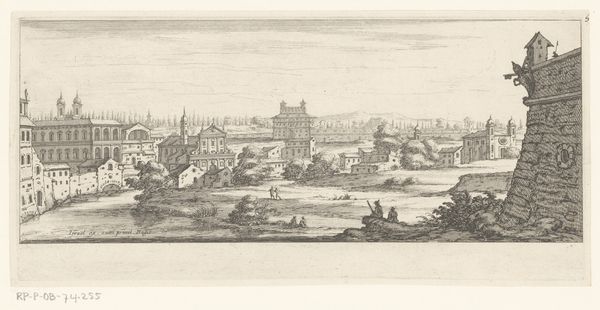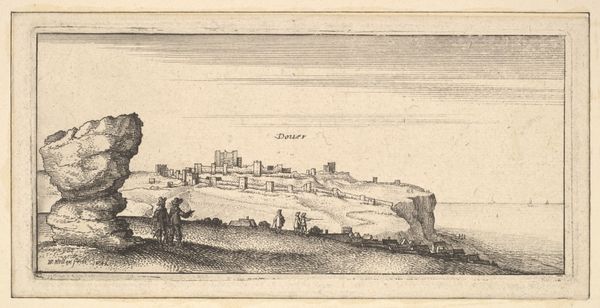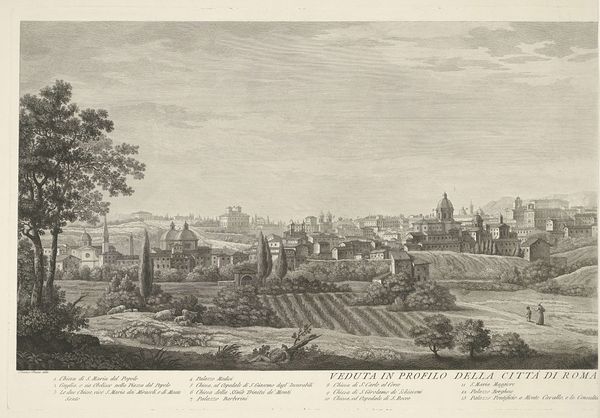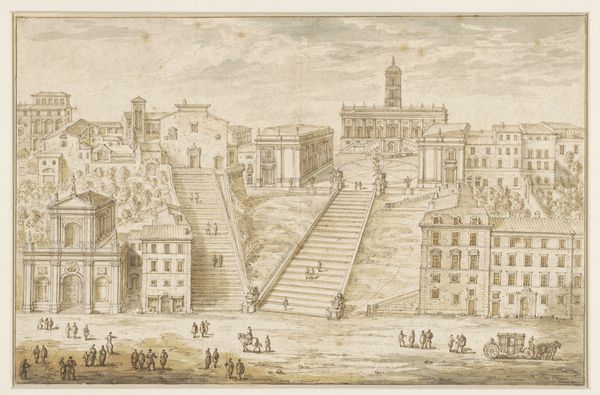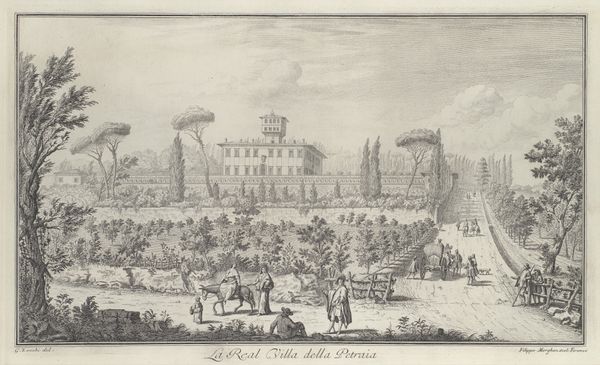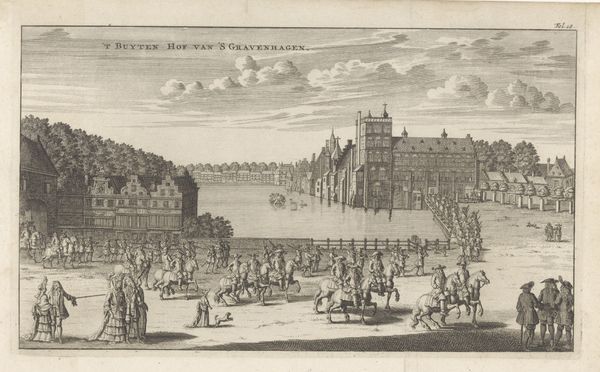
drawing, print, etching
#
drawing
# print
#
etching
#
landscape
#
cityscape
#
history-painting
Dimensions: Sheet: 3 11/16 × 6 3/4 in. (9.4 × 17.1 cm) trimmed on platemark
Copyright: Public Domain
Curator: Right, let’s delve into this cityscape before us. We're looking at Wenceslaus Hollar's "Windsor Castle," an etching and print from 1644, currently residing at the Metropolitan Museum of Art. Editor: Wow, it's striking! Almost feels like a stage set. The detail is incredible, considering it's an etching, but it also possesses a kind of melancholic air, doesn't it? Like a beautiful dream tinged with a bit of sorrow. Curator: I find the medium crucial here. Hollar was known for his meticulous approach to etching, a process that allowed for mass production of images. Etchings like this provided access to visual information about places and events for a wider audience during the 17th century. Windsor became less a fortress and more a commodity. Editor: True. Yet it's not merely a topographical record. There’s a clear artistic intention. The landscape surrounding the castle seems to cradle it, emphasizing the weight of history contained within those walls. The choice to have figures milling around also, is fascinating – daily life goes on even in proximity of power, even during, maybe, great upheavals. Curator: Indeed. Consider the social context. 1644 was smack in the middle of the English Civil War. While Hollar’s artistic patronage came largely from royalist circles, such images helped to formulate ideas around English identity even at a moment of fracture. What did Windsor symbolize at that moment? Safety? Continuity? Tyranny? All, or none, perhaps. Editor: Absolutely, art doesn’t exist in a vacuum. I find that contrast – the domestic vs. political tensions, the soft sky against the stony battlements– to be quite palpable. It also has an emotional pull; for me, the castle, like an aged monarch, watches over time passing. I can almost smell the damp stone. Curator: Which brings up another point, Hollar’s journey making such views—the labor involved. Before photography, an artist like Hollar served as both photographer and journalist, documenting a scene for broader circulation. It speaks to the increasing urbanization and its impact on the making of the images. Editor: Yes, in my perspective, there is always such a fine and delicate balance. This image captures an important transition of craft, commerce, and collective imagination. That is truly timeless, I feel.
Comments
No comments
Be the first to comment and join the conversation on the ultimate creative platform.
